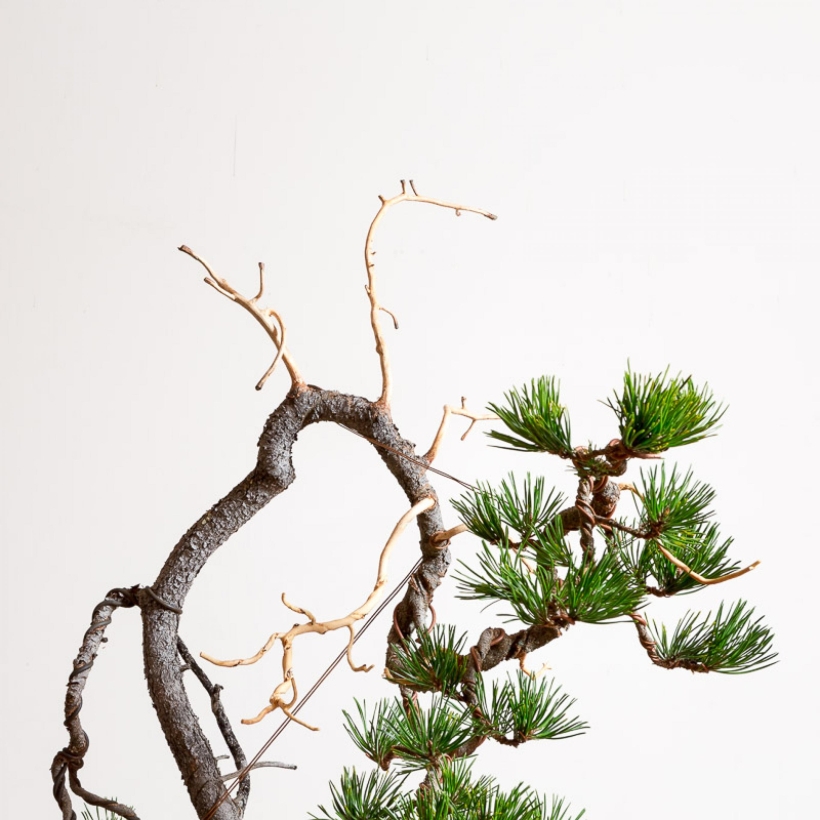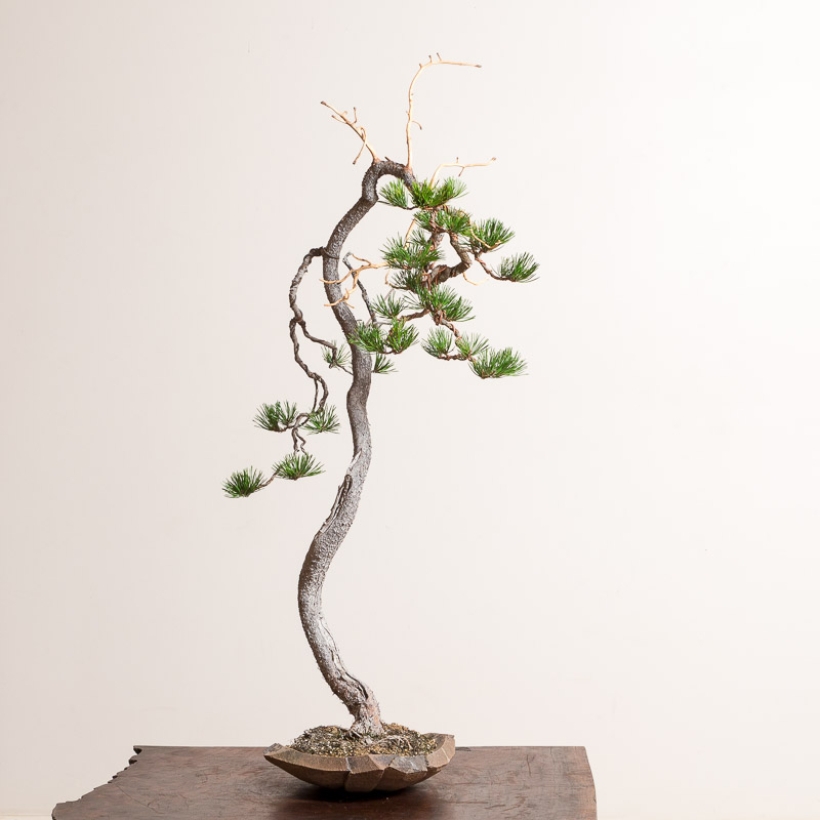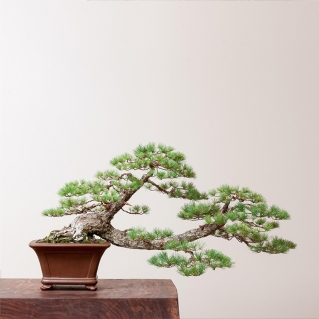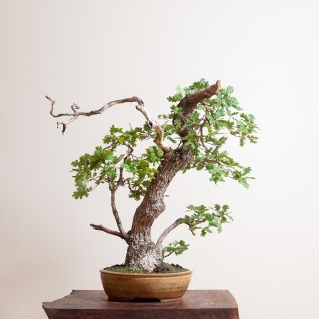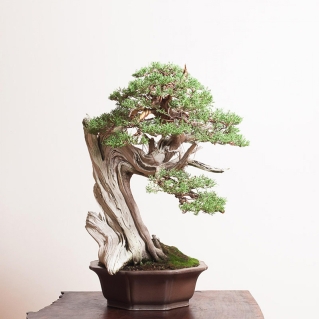Lodgepole Pine Bonsai
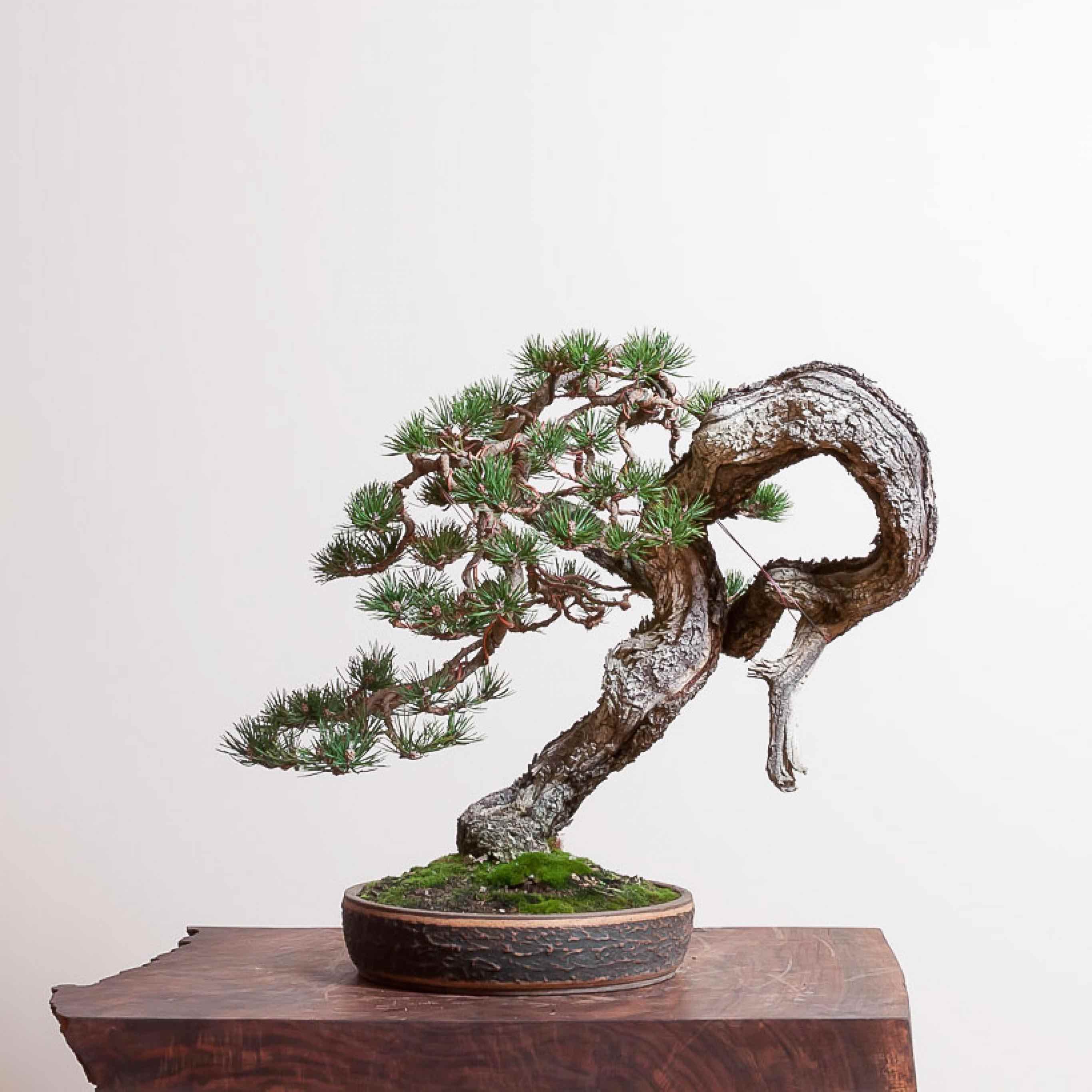
General Information
Lodgepole Pine—(Pinus contorta subsp. latifolia) is a moderate water mobility short-needle, single-flush pine native to the western mountainous regions of North America. This two-needle pine species has short, straight, dark green needles with pointed reddish-brown buds that are very resinous. Lodgepole pines occupy arid and moist conditions in the sub-alpine regions from 6,000 feet to 10,000 feet. The trunk is long and slender, with a short, narrow, and cone-shaped crown in youth. However, older pines can become quite thick and massive, establishing broadening crowns and living over 300 years.
The bark of lodgepole pine bonsai is thin, flaky, and light grey. It’s slowly forming, and young trees remain smooth for several decades. Thicker and more plated bark on these pines is a tremendous indicator of age as old bark takes on a blackened color between the bark plates.
Of all the native pines North American pines utilized as bonsai, the lodgepole pine demands the most artistry and creativity. Their trunk and branch shapes most closely resemble the unique, slender, and creative forms seen in Japanese red pine bonsai in Japan.
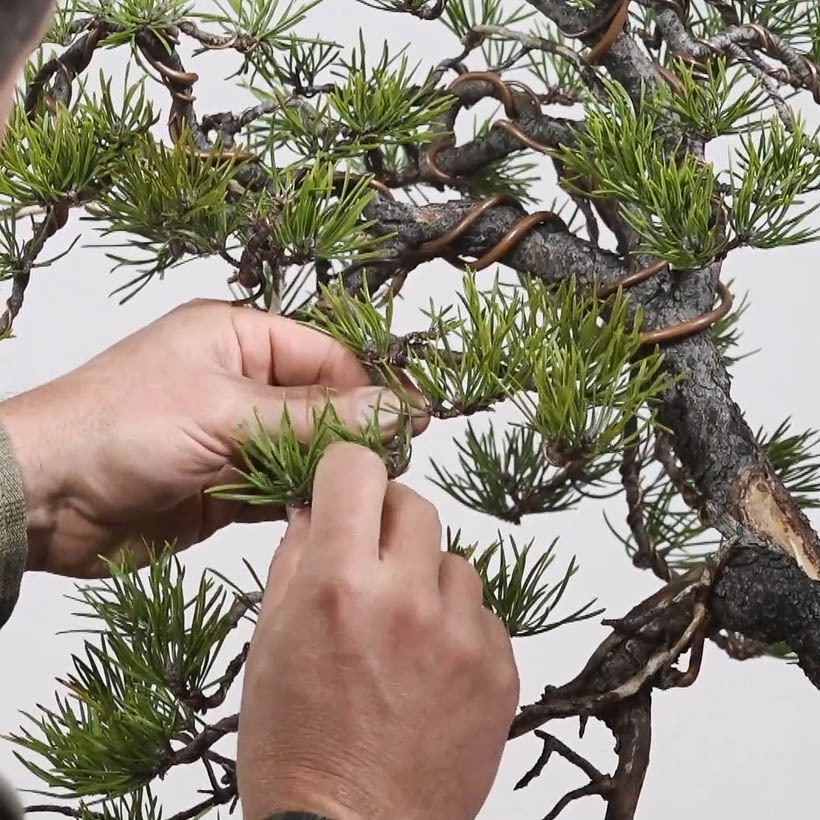
Caring for Lodgepole Pine Bonsai
Watering
Lodgepole pine is a moderate water mobility pine that occupies drier areas at higher elevations and necessitates moister areas at lower, warmer elevations. Like any other pine species in bonsai, the key to ultimate health is striking a balance of water and oxygen. Pines need a more oxygen-rich environment.
Lodgepole pine should be allowed to dry out between waterings completely and then thoroughly soaked to rehydrate the entire container until water runs out of the drainage holes.
Sun Exposure
These high-elevation pines respond best in full sun all day but can get by on no less than four hours of full sun per day. In more humid environments or zones with temperatures at the upper end of heat tolerance (zone 8b), lodgepole pine benefits from light shade cloth (20%) or late afternoon shade in the warmest months.
With full sun, lodgepole pine will:
- Backbud profusely
- Reduce needle length
- Gain strength (as indicated by more extensive and more abundant terminal buds)
Temperature
(USDA Zone 4-8) Lodgepole pine is a versatile species for bonsai capable of thriving in high heat, tolerating temperatures over 100*F. However, being a mountainous pine adapted to higher elevations, Pinus contorta subsp. latifolia needs winter dormancy and is adapted to abiding freezing temperatures down to 10*F in a bonsai container.
Typically, dormancy requirements are met when trees spend four cumulative weeks (28 days throughout winter) with temperatures below 5*C or 41*F for more than twelve hours per day. The colder temperatures get, the shorter the time necessary to satisfy dormancy requirements.
Fertilizing
Light to moderate fertilization is ideal over the fall. Because lodgepole pine is a short-needle single-flush pine, an established tree can be heavily fed over the spring season to get a pronounced push out of growth. This growth can be pinched to transition energy to stimulate new bud growth and achieve density quickly.
Once the spring flush hardens off, pull back on fertilization through early summer and completely stop by the end of the summer. Once fall rolls around, begin again with a light to moderate fertilization.
Because lodgepole pine is native to higher elevations, it will swell and add vascular tissue rapidly.
This can cause:
● Wire biting in
● Bark to shed; or
● Overgrowth into deadwood
Pruning
It’s ideal to prune lodgepole pine bonsai in the early spring when temperatures are not too warm, just before the flush of its growth. This is when sap flow is at a lower rate, allowing for the lodgepole to “bleed” less sap when being cut. If the tree bleeds a lot of its sap, it’s thought to be losing some of its energy.
If you notice a lot of sap loss, immediately stop. Wrap the branches, cauterize them, and stop sap flow. If pruning is unsuccessful in the spring, early fall would be the best time to fix any structural damage and attempt pruning again.
Because lodgepole pine is a short-needle single-flush pine, it needs help to redistribute energy and create new needle mass. You can achieve this by using the pinching process—pinching strong areas to medium areas first before pinching a second time from medium areas to weaker areas.
This pinching process allows you to:
● Control and refine
● Tighten and compact; and
● Transition energy
Wiring
Wiring lodgepole pine bonsai allows you to force the tree to grow in the desired shape and helps you control where new buds will emerge. It also promotes energy distribution throughout the tree.
Wiring is usually best done in the winter or early fall months.
Repotting
The optimal time to repot a lodgepole pine is when the candles begin to swell. However, remember that you never want to bare root any conifers during the repotting process. Because the strength of pine comes from the root, you need to leave a substantial amount of root untouched to be successful.
A soil like 1:1:1 akadama, pumice, and lava, ⅛ to ¼ inch interior soil size is the best for lodgepole pine to grow. It has porosity, retains nutrients longer, and promotes a healthy root structure.
Propagation
Lodgepole pine is primarily propagated through seeds, which has been very successful.
Similar to other types of pine, lodgepole likely has a scarification process to germinate.
Research on lodgepole pine regeneration dates back to the mid-1900s when experiments were done on regenerating lodgepole pine with and without fire to determine which seeds were viable to germinate.
Pests/Disease
Generally, pines suffer from woolly adelgid bugs. Lodgepole pine bonsai is no different. The woolly adelgids feed by sucking sap from the trees in the early spring.
Historically, lodgepole pine was removed and devastated by a native wood-boring beetle. Over 95% of lodgepole pine along the Continental Divide of Colorado, Wyoming, and up to Canada suffered.
Some diseases also impact lodgepole pine, including mistletoe and diplodia.
Lodgepole pine is highly susceptible to mistletoe in lower elevations. Mistletoe will cause abnormal swellings and large knuckles or bumps along the branches and trunk.
Diplodia tip blight is a fungal pathogen that infects cones, needles, and stems of various trees. Its black dots are easy to spot, so you’ll quickly know if your lodgepole pine is infected.
Lodgepole Pine Bonsai FAQS
No. Both lodgepole pine and shore pine are Pinus contorta, but lodgepole is P. contorta latifolia and shore pine is P. contorta contorta. Lodgepole pine is the Alpine version of contorta, while shore pine is the coastal version. Besides both being short-needle single-flush pines, the two trees don’t have much in common.
If you reestablish the roots of a lodgepole pine post collection or post initial repotting, you can get a lodgepole pine to back bud profusely.
If you…
● Fertilize correctly in the spring season
● Water correctly to strike the balance between water and oxygen; and
● Prune correctly
…the tip will become robust with dense needle mass and create more vascular tissue along the branches. Once lodgepole pine feels it has enough resources to expand, it will back bud aggressively.
